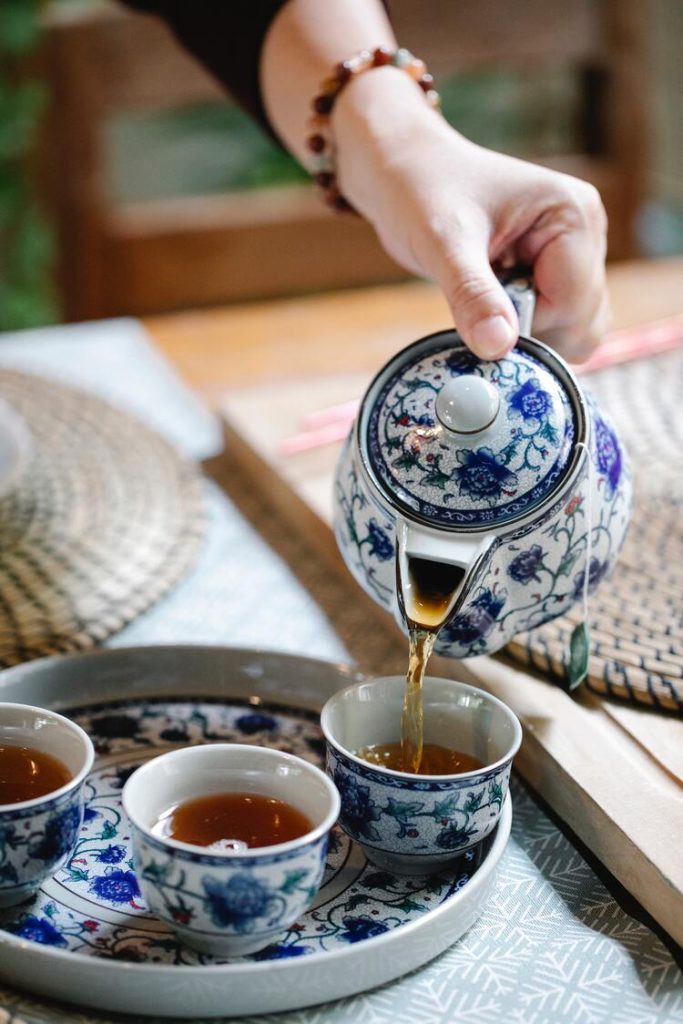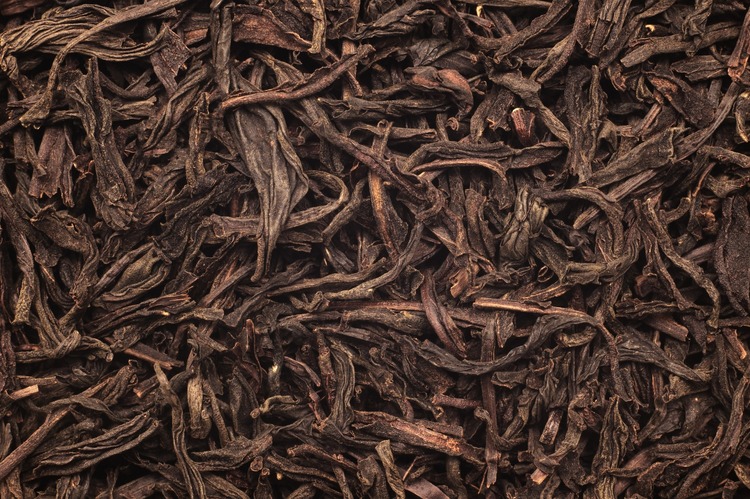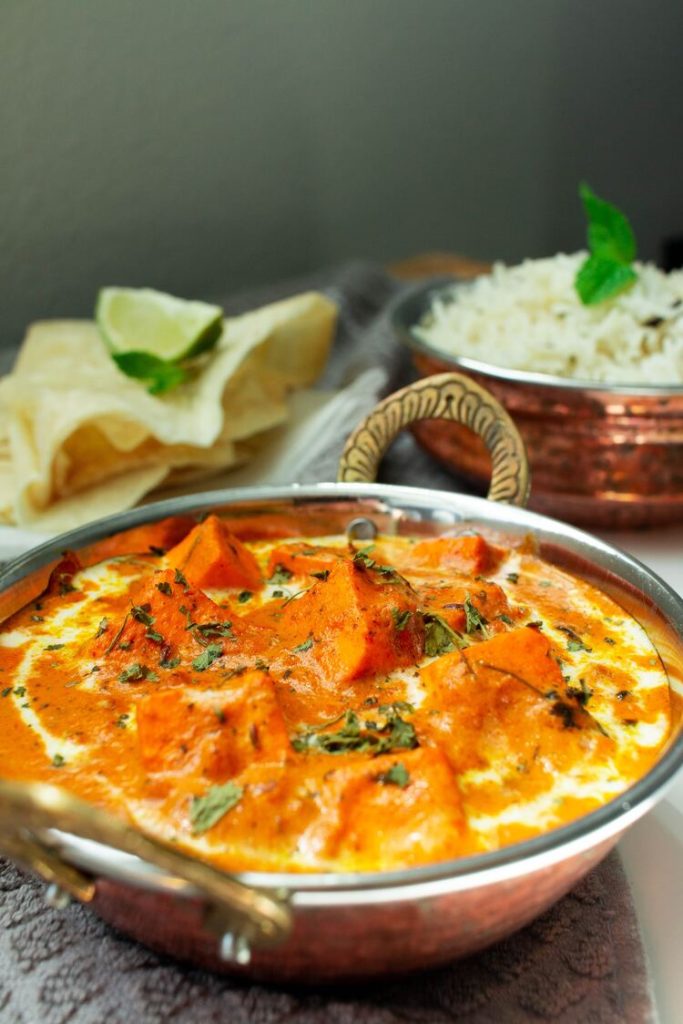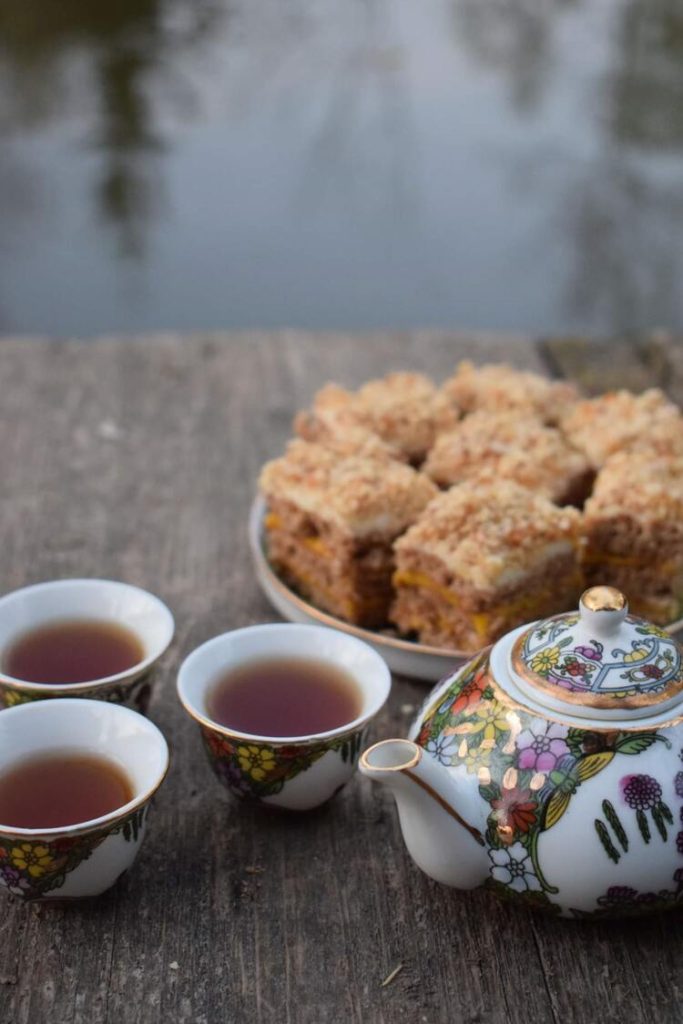You’ve probably heard of Lapsang Souchong black tea if you are a tea fan. And, if you have not heard about it, I hope you are ready for a treat!
This tea has a distinct smoky flavor, and its aroma sets it apart from other black teas. Lapsang Souchong is made by smoke-drying tea leaves over pinewood fires, giving it a bold and robust flavor that is perfect for those who enjoy a strong cup of tea.
Keep reading to learn more about this surprisingly delicious black tea.
Please note: This article contains affiliate links, meaning I may earn a commission if you make a purchase by clicking a link. Of course, this comes at no extra cost to you and helps me keep offering readers solid information.

History and Origin
Lapsang Souchong has a long and fascinating history that dates back to the Qing dynasty in China.
Legend has it that the tea was accidentally created when tea leaves were left to dry near a fire. The tea absorbed the smoke and took on the flavor. The tea was then named Zhengshan Xiaozhong, which means “small plant from the Wuyi Mountains.” Lapsang Souchong is an interpretation or bastardization of Zhengshan Xiaozhong.
The Wuyi Mountains in Fujian Province, China, are known for their rugged terrain and climate, perfect for growing tea. The tea grown in this region is highly prized and is considered some of the best in the world.
The tea became popular in Europe in the 17th century and was enjoyed by royalty and commoners. Lapsang Souchong black tea is still produced in the Wuyi Mountains using traditional methods.
And, since we are discussing Chinese black teas, remember that the country’s black teas are divided into three types: gongfu (congou), xiaozhong (souchong, smoked), and brick tea. Most black teas in the country, including those of the highest quality, are classified as gongfu.
In this article, we are discussing the leading player in the souchong category.
Production Process
Here’s is an overview of how Lapsang Souchong black tea is produced:
- Withering: The freshly plucked tea leaves are spread out in a building where smoke can circulate. As they wither, the leaves absorb the smoke from pine or cedar wood fires. The leaves may be turned several times to be exposed to heat evenly. In some cases, the leaves are placed outside after this initial exposure to smoke to continue the withering process. This process helps to remove excess moisture from the leaves and make them more pliable.
- Rolling: The withered leaves are rolled gently to break their cell walls and initiate oxidation.
- Oxidation: The rolled leaves are spread out and oxidized in a controlled environment with moderate temperature and humidity. During oxidation, the tea leaves react with the oxygen in the air, causing their color to change from green to brown. This step is crucial in the production of black tea.
- Firing: After reaching the desired oxidation level, the leaves are pan-fired (in a wok) to halt the oxidation process.
- Smoking and Drying: The leaves are smoked for a second time. This step intensifies the smoky flavor. The tea master carefully controls the temperature and smoke intensity to ensure the leaves are not burnt. Also, in this step, the residual moisture is removed. This step ensures the tea leaves are stable and can be stored without spoilage.
- Packaging: After the processing, the Lapsang Souchong tea leaves are sorted, graded, and packaged for distribution and consumption.
Remember, this is a short overview of this tea’s production process. Production methods may vary. The main point to remember is that this tea is processed as black tea (of course), and a smoke element is introduced at one point (cold or hot smoke). In addition, some manufacturers may store the smoked tea leaves in rooms with cypress wood or pine resin to enhance the flavor.

Lapsang Souchong Black Tea Flavor Profile
You’ll immediately notice its smoky flavor when you sip Lapsang Souchong black tea. However, the smokiness is not overpowering and is balanced with other flavors, making it a well-rounded tea.
As you savor the tea, you’ll notice a range of notes that add complexity to its flavor profile. Depending on the blend, you may detect hints of pine, fruit, or even chocolate. These notes add depth to the tea, making it a gratifying experience.
The liquor of Lapsang Souchong is a rich reddish-brown color that is pleasing to the eye. It has a medium to full body that provides a satisfying mouthfeel. The tea is not too heavy but not light, making it an excellent choice for any time of day.
Regarding spice, Lapsang Souchong has a subtle, warm spiciness that adds to its complexity. It’s not intense, but it’s enough to kick the tea.
Brewing Lapsang Souchong Black Tea
When brewing Lapsang Souchong black tea, remember a few things to ensure a perfect cup every time.
First, start by heating your water to the right temperature. Lapsang Souchong is best brewed with water below boiling, around 195-205°F (90-96°C). This will help to release the full flavor and aroma of the tea.
Next, use a large teapot to allow the tea leaves to expand fully. A ceramic or glass teapot is ideal, as it will retain heat well and let you see the color of the tea as it brews.
Measure out the tea leaves according to your taste. A good rule of thumb is to use 1 teaspoon of tea leaves per 8 ounces of water. Place the leaves in the teapot and pour the hot water over them.
Allow the tea to steep for 3-5 minutes, depending on your preference. Lapsang Souchong is a strong tea, so you may want to adjust the steeping time to suit your taste.
Once the tea has steeped, pour it into your cup and enjoy!
You can enjoy Lapsang Souchong black tea alone or with some honey or milk. Add a slice of orange or a dash of vanilla to your tea for a unique twist.

Lapsang Souchong Black Tea Blends
Lapsang Souchong blends are variations of the traditional Lapsang Souchong black tea that incorporate additional ingredients or flavors to create new tea experiences. Here are a few examples of the most notorious blends:
- With Bergamot: This blend combines the smoky notes of Lapsang Souchong with the citrusy and floral bergamot flavors. The result is a tea that combines the distinct smokiness with a touch of Earl Grey’s signature aroma.
- With Fruit: Some blends include dried fruits, such as apple, peach, or orange peel, to add a hint of sweetness and fruitiness to the smoky base of Lapsang Souchong. These blends balance the added fruits’ bold, smoky taste and natural sweetness.
- With Spice: Blends incorporating spices like cinnamon, ginger, or cardamom can create a warm and aromatic cup of tea. The smoky base of Lapsang Souchong pairs well with these spices, adding complexity and depth to the overall flavor.
- With Floral Notes: Some blends combine Lapsang Souchong with delicate floral ingredients like rose petals, jasmine, or lavender. These floral additions can give the smoky tea a subtle, fragrant dimension, creating a unique sensory experience.
Food Pairings
The robust and complex taste of Lapsang Souchong can complement and enhance certain flavors. Here are some food pairings that work well with this tea:
- Smoked or Grilled Meats: The smoky notes of the tea harmonize beautifully with smoky or grilled meats like barbecued ribs, smoked salmon, or grilled steak.
- Spicy Dishes: Lapsang Souchong’s bold flavor can hold against spicy foods. It can provide a refreshing contrast to dishes with heat, such as spicy stir-fries, curries, or chili-based dishes. The tea’s robustness can balance the spiciness and offer a pleasant counterpoint.
- Aged or Strong Cheeses: Lapsang Souchong pairs well with aged or strong-flavored cheeses like cheddar, Gouda, or blue cheese.
- Dark Chocolate: The bitterness and richness of dark chocolate can be accentuated by sipping the tea alongside it, creating a harmonious pairing for those who enjoy robust flavors.
- Roasted Nuts: The earthy and smoky elements in Lapsang Souchong can complement roasted nuts such as almonds, pecans, or hazelnuts.
- Smoky or Spiced Barbecue Sauces: Lapsang Souchong can be a great accompaniment to dishes with smoky or spiced barbecue sauces. Whether it’s grilled chicken, ribs, or pulled pork, the tea’s smokiness can resonate with the flavors in the sauce, creating a harmonious pairing.

Health Benefits
If you are a tea lover, you will be happy to know that Lapsang Souchong black tea has many health benefits. Here are some of the benefits that you can enjoy:
Rich in Antioxidants
Lapsang Souchong black tea is rich in antioxidants that help to protect your body from damage caused by free radicals. These antioxidants can help to reduce the risk of chronic diseases such as cancer, heart disease, and diabetes.
Boosts Energy Levels
This black tea contains caffeine, which can help to boost your energy levels and improve your mental alertness. A cup of this morning tea can help you start your day on the right foot.
Helps with Digestion
Lapsang Souchong black tea contains tannins, which can help to improve your digestion. These tannins can help to reduce inflammation in your gut and prevent digestive issues such as bloating, gas, and constipation.
Other Benefits
In addition to the above benefits, this black tea can also help to:
- Boost your immune system
- Improve your cardiovascular health
- Lower your risk of stroke
- Promote healthy skin
Lapsang Souchong vs Other Black Teas
Regarding black teas, Lapsang Souchong stands out from the rest with its smoky flavor. But how does it compare to other black teas? Let’s take a closer look.
Flavor
Compared to other black teas, Lapsang Souchong has a distinct smoky flavor from the tea leaves being dried over pine wood fires. This gives the tea a rich, savory taste often described as “campfire-like.” Other black teas, such as Darjeeling or Assam, have a more traditional tea flavor, often earthy or floral.
Caffeine Content
Lapsang Souchong and other black teas contain similar amounts of caffeine. However, it’s important to note that caffeine levels can vary depending on the brewing method and how long the tea is steeped.
Health Benefits
Like other black teas, Lapsang Souchong contains antioxidants that can help protect against cell damage and reduce the risk of chronic diseases. However, it’s essential to keep in mind that adding milk or sugar to your tea can negate some of these health benefits.
Oolong Tea
While Lapsang Souchong is a black tea, it’s worth noting that it also has some similarities to oolong tea. Oolong tea is partially oxidized, has a lighter flavor, and is often described as having a fruity or floral taste. If you’re a fan of Lapsang Souchong, you may want to give oolong tea a try as well.
Note: Some of the best oolong teas in the world are grown and processed in the Wuyi Mountains, the same region where Lapsang Souchong is processed. These include Da Hong Pao, Shui Jin Gui, Tie Luo Han, and Bai Ji Guan.
If you’re a fan of traditional black teas, you may prefer Darjeeling or Assam. However, if you’re looking for something a little different, Lapsang Souchong is worth a try.

Lapsang Souchong Black Tea Top Recommendations
We have arrived at the part where I provide my top recommendations. There are a lot of options when it comes to lapsang souchong.

Stash Tea Lapsang Souchong Premium Black Loose Leaf Tea

Taylors of Harrogate Lapsang Souchong

Twinings Origins Tea Lapsang Souchong

Harney & Sons Lapsang Souchong

Alright, this was yet another wonderful article to write since I love, love trying different tea flavors. I hope you enjoyed the article. See you next time!
Have you tried lapsang souchong black tea?
More About Black Tea
The Process of Making Black Tea
What Does Black Tea Taste Like?
What Does Assam Tea Taste Like?
What Does Darjeeling Tea Taste Like?
What Does Ceylon Tea Taste Like?
What Does Chai Tea Taste Like?